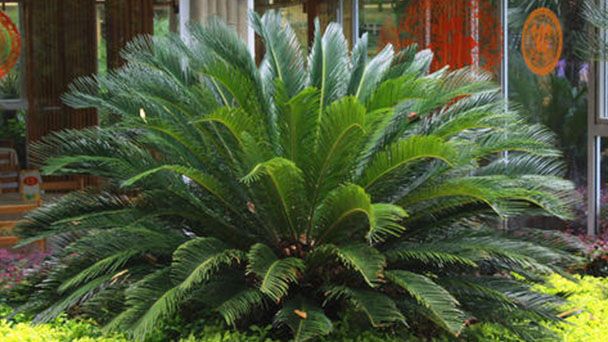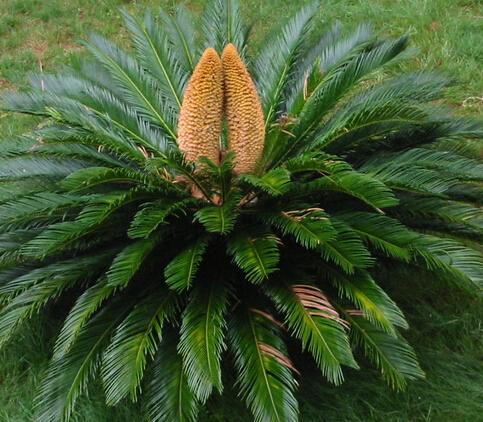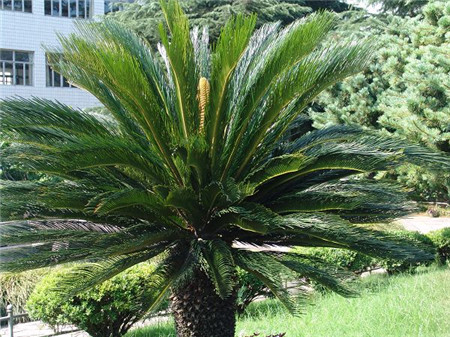Sago palm care
Written by Maggie
Sep 02 2021

Many flower friends have plants at home. Sago palm modelling is graceful, stem of primitive simplicity is strong, leaf is thick green oily bright, the four seasons is evergreen, bark if fish scale, chic and have lasting appeal extremely. Sago palm grows slowly, can grow tall and mighty, and also can be planted in ceramic flower pots, matched with clever stone. It is the bonsai plant with admirable ornamental value.With more and more people growing it, learning some caring tips of Sago palm is very important. Here is the Sago palm care guide.

Sago palm care for leaf drooping
There are many reasons for Sago Palm's leaf droop. If the light is insufficient, move the plant to the ventilated and sunny place for curing, and give sufficient light treatment. If the temperature is too low, move the flowerpot indoors, and keep the room temperature above 13℃.
1. Increase light
Sago palm is a light-liking plant, which is slightly shade tolerant. If the plant is kept in a shady environment for a long time during growth and development, it is easy for the branches to grow and the leaves to droop. At this time, the plant should be moved to a ventilated and sunny environment, but in summer, it should be properly ventilated and shaded to avoid sunburn.
2. Heating treatment
Sago Palm is a tropical plant, which is suitable for growth in a warm environment. If the surrounding temperature is very low, it will cause the phenomenon of branches and leaves to droop, which is also one of the reasons for the droop of leaves. At this time, the pot should be moved indoors and the room temperature should be controlled above 13°C to avoid frost scratch.
3. Add moisture
Sago Palm likes to grow in moist soil. If it is often not watered during the growth period, or if the air humidity is low in high temperature, it will cause the branches and leaves to turn yellow. At this time, it is necessary to spray the leaves with water timely to increase the humidity.
4. Reduce fertilization
Sago palm is a fattening plant, but it is not suitable for heavy or heavy fertilizer. If fertilizer is applied to the leaves during the process of fertilization, or if too much fertilizer is applied, it is easy to cause the leaves to sag and turn yellow. At this time, fertilization should be stopped.

Sago palm care for root decay
1. Remove rotten roots
When the Sago palm root rot, the rotten roots need to be dug up. Prune rotten roots, but don't damage healthy parts. Then use carbendazim immersion time for half an hour, and apply disinfection treatment. They are then left to cool in a cool environment.
2. Change the soil quality
If the soil of Sago Palm is too viscous, it will hinder the growth of the root system and the water cannot permeate, so it is better to replace it with loose and breathable humus. Sago palm is very adaptable. After the change of soil quality and careful maintenance, it only takes about 5 months to germinate new roots.
3. Reduce watering
Under normal circumstances, excessive water is easy to see the phenomenon of rotten roots. Therefore, it is necessary to water properly after curing in the pot. Water can be timely replenished in accordance with the principle of "dry and wet".
4. Stop fertilizing
It is necessary to stop fertilizing during the growing process of Sago palm, otherwise the excessive fertilizer will cause root rot. Therefore, it is better to stop fertilizing during the curing period. When the root of the plant grows again, it is possible to apply scarce fertilizer, and the fertilization time should be chosen in spring and autumn when the growth is vigorous, and stop fertilizing in other seasons. Read more about how to grow and care for Sago Palm.

Latest Updated
- Benefits of Bugleweed - 7 Science-backed Health Benefits
- Bugleweed Dangers & Side Effects - Is It Poisonous?
- How to Plant Evergreen Trees - What You Should Know
- When to Plant Evergreens - Grow Guide for Evergreen Trees
- 12 Wonderful Evergreen Shrubs for Your Garden
- 12 Popular Evergreen Plants with Pictures for Beginners
- When And How To Prune A Lilac Bush Like a Pro
- How to Grow & Care for Lilac Vine (Hardenbergia Violacea)
- Japanese Lilac Tree (Syringa Reticulata) Care & Propagation Guide
- Shumard Oak Pros and Cons - What to Know
Popular Articles
- Winter maintenance of Antirrhinum Majus
- How to Grow Terminalia Mantaly Tree
- How to Grow and Care for Crossostephium Chinense
- How to grow Antirrhinum Majus in spring
- Peristeria Elata (Dove Orchid) Profile: Info & Care Guide
- Underwatered Snake Plant (Sansevieria Trifasciata) - Signs And How To Fix
- How to Care for Brazilian Jasmine Plant (Mandevilla Sanderi)
- How to Grow & Care for Graptopetalum Purple Delight in Summer
- Rosa Chinensis (China Rose): Plant Growing & Care Tips
- How to Care for Baby Sun Rose (Aptenia Cordifolia)